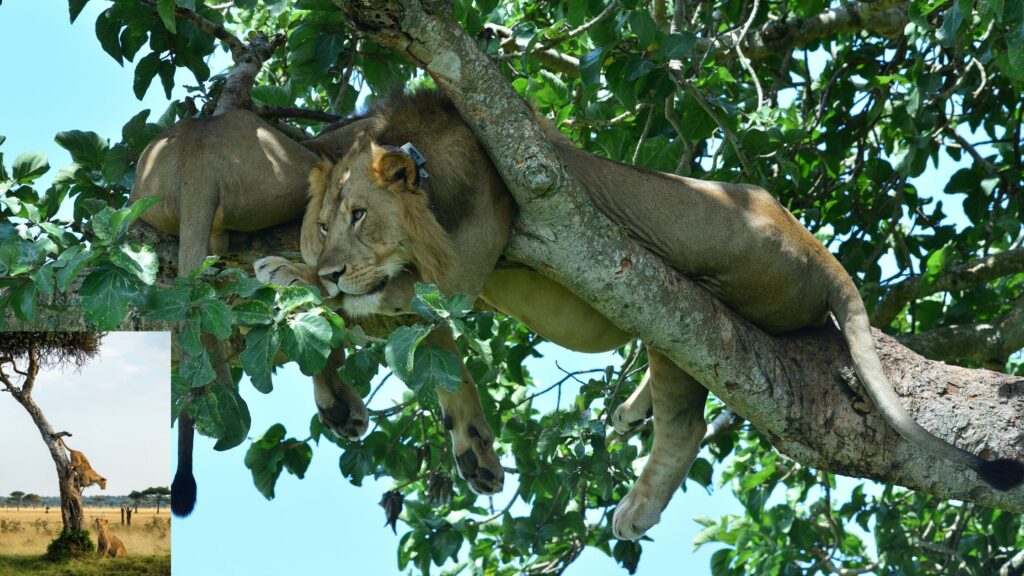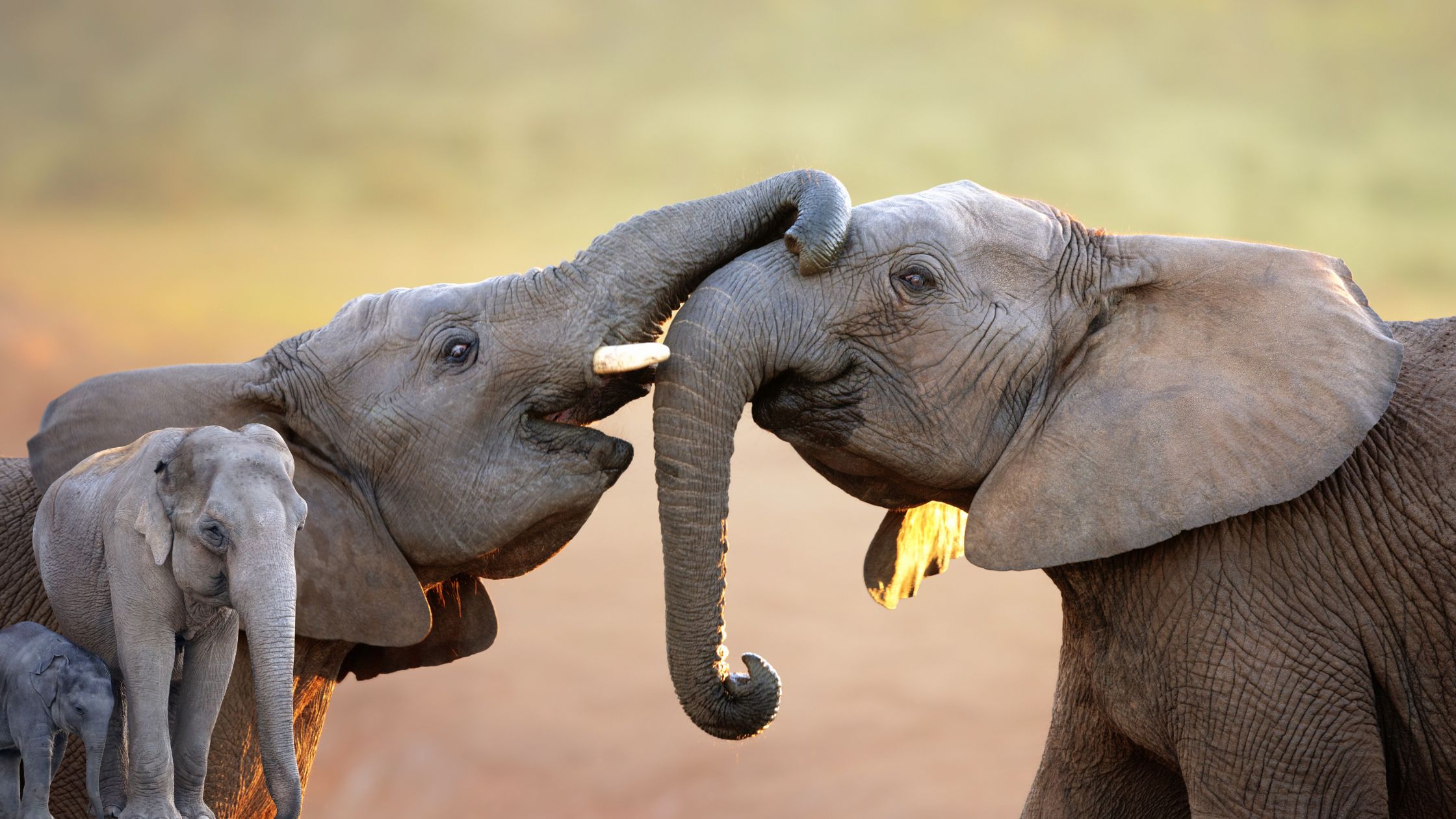When we think of lions, we typically imagine them as the mighty rulers of the savannah, prowling the grasslands with power and grace. However, there’s a fascinating and lesser-known side to these majestic creatures: some lions are adept tree climbers. This article explores the intriguing behavior of tree-climbing lions, primarily found in East Africa, and delves into the reasons behind this unusual adaptation.
The Phenomenon of Tree-Climbing Lions
Tree-climbing lions are not a distinct species or subspecies of lions but rather ordinary lions that have developed an extraordinary skill. While most lions prefer to stay on the ground, certain prides in East Africa have become proficient climbers, spending significant amounts of time perched in the branches of trees. This behavior is most commonly observed in two locations: the Lake Manyara National Park and the Ishasha sector of Queen Elizabeth National Park.
Where to Find Tree-Climbing Lions
1. Lake Manyara National Park, Tanzania
Lake Manyara National Park is renowned for its diverse wildlife and stunning scenery. Among its many attractions are the tree-climbing lions, which have become one of the park’s most famous features. These lions can often be seen lounging in acacia trees, providing a unique and captivating sight for visitors.
2. Ishasha Sector, Queen Elizabeth National Park, Uganda
The Ishasha sector of Queen Elizabeth National Park is another hotspot for observing tree-climbing lions. Here, lions frequently climb fig trees, offering visitors a rare glimpse of this unusual behavior. The park’s varied landscape and rich biodiversity make it an ideal destination for wildlife enthusiasts.
Why Do Lions Climb Trees?
The reasons behind this arboreal behavior are still a topic of study and debate among wildlife researchers. However, several plausible explanations have been proposed:
1. Escaping the Heat
One of the primary reasons lions climb trees is to escape the intense heat on the ground. The higher branches offer cooler temperatures and shade, allowing lions to rest comfortably during the hottest parts of the day.
2. Avoiding Insects
Another motivation for climbing trees is to avoid bothersome insects. Tsetse flies, in particular, are a significant nuisance for lions. By climbing into the trees, lions can escape these biting flies and enjoy a more peaceful rest.
3. Surveying Their Territory
From a higher vantage point, lions can survey their surroundings more effectively. This elevated position allows them to spot potential prey or threats from a distance, providing a strategic advantage in both hunting and defense.
4. Social Behavior
Tree climbing may also play a role in social bonding within the pride. The communal nature of climbing and resting together in trees could strengthen social ties and cooperation among pride members.
The Adaptations of Tree-Climbing Lions
Tree-climbing lions exhibit several physical and behavioral adaptations that enable them to navigate the branches with ease:
1. Physical Strength
Lions are naturally strong and muscular, which aids them in climbing. Their powerful limbs and claws provide the necessary grip and support to ascend tree trunks and move along branches.
2. Balance and Coordination
Climbing trees requires a good sense of balance and coordination. Lions that regularly engage in this behavior develop these skills, allowing them to move confidently and gracefully among the branches.
3. Learned Behavior
Tree climbing is often a learned behavior passed down through generations. Younger lions observe and imitate the actions of older, more experienced pride members, gradually acquiring the skills needed to climb trees effectively.
Observing Tree-Climbing Lions
For wildlife enthusiasts and photographers, observing tree-climbing lions is a thrilling experience. Here are some tips for maximizing your chances of witnessing this behavior:
1. Visit the Right Locations
Plan your visit to known habitats of tree-climbing lions, such as Lake Manyara National Park in Tanzania or the Ishasha sector in Uganda’s Queen Elizabeth National Park. These areas offer the best opportunities to see lions in trees.
2. Timing is Key
The best time to observe tree-climbing lions is during the hotter parts of the day when they are most likely to seek refuge in the trees. Early morning and late afternoon game drives can increase your chances of spotting them.
3. Hire a Knowledgeable Guide
A knowledgeable guide can greatly enhance your experience. Guides familiar with the behavior of tree-climbing lions can lead you to the best spots and provide valuable insights into their habits and movements.
4. Be Patient and Observant
Wildlife watching requires patience. Keep your eyes peeled and be prepared to wait for the lions to appear. The reward of seeing these magnificent creatures perched high in the branches is well worth the effort.
Conservation of Tree-Climbing Lions
Conservation efforts are crucial to protect the habitats of tree-climbing lions and ensure their survival. Both Lake Manyara National Park and Queen Elizabeth National Park are protected areas, but they still face challenges such as habitat encroachment, poaching, and human-wildlife conflict.
1. Habitat Protection
Preserving the natural habitats of these lions is essential. Conservation organizations work to protect and restore these areas, ensuring that lions and other wildlife have safe and sustainable environments.
2. Anti-Poaching Measures
Poaching remains a significant threat to lion populations. Anti-poaching initiatives, including ranger patrols and community education programs, help reduce illegal hunting and protect lions from harm.
3. Community Involvement
Engaging local communities in conservation efforts is vital. Community-based conservation programs provide education and incentives for locals to participate in wildlife protection, fostering coexistence between humans and lions.
4. Ecotourism
Ecotourism plays a significant role in conservation by generating revenue for protected areas and raising awareness about the importance of wildlife preservation. Responsible tourism practices help ensure that lion populations thrive for future generations to enjoy.
The phenomenon of tree-climbing lions adds another layer of intrigue to our understanding of these majestic creatures. Whether it’s escaping the heat, avoiding insects, surveying their territory, or simply engaging in social behavior, the reasons behind this unique adaptation are as varied as they are fascinating.
For those eager to witness this extraordinary behavior firsthand, visiting Lake Manyara National Park or the Ishasha sector of Queen Elizabeth National Park offers an unforgettable experience. By supporting conservation efforts and promoting responsible tourism, we can help ensure that these remarkable lions continue to grace the branches of trees for generations to come.

